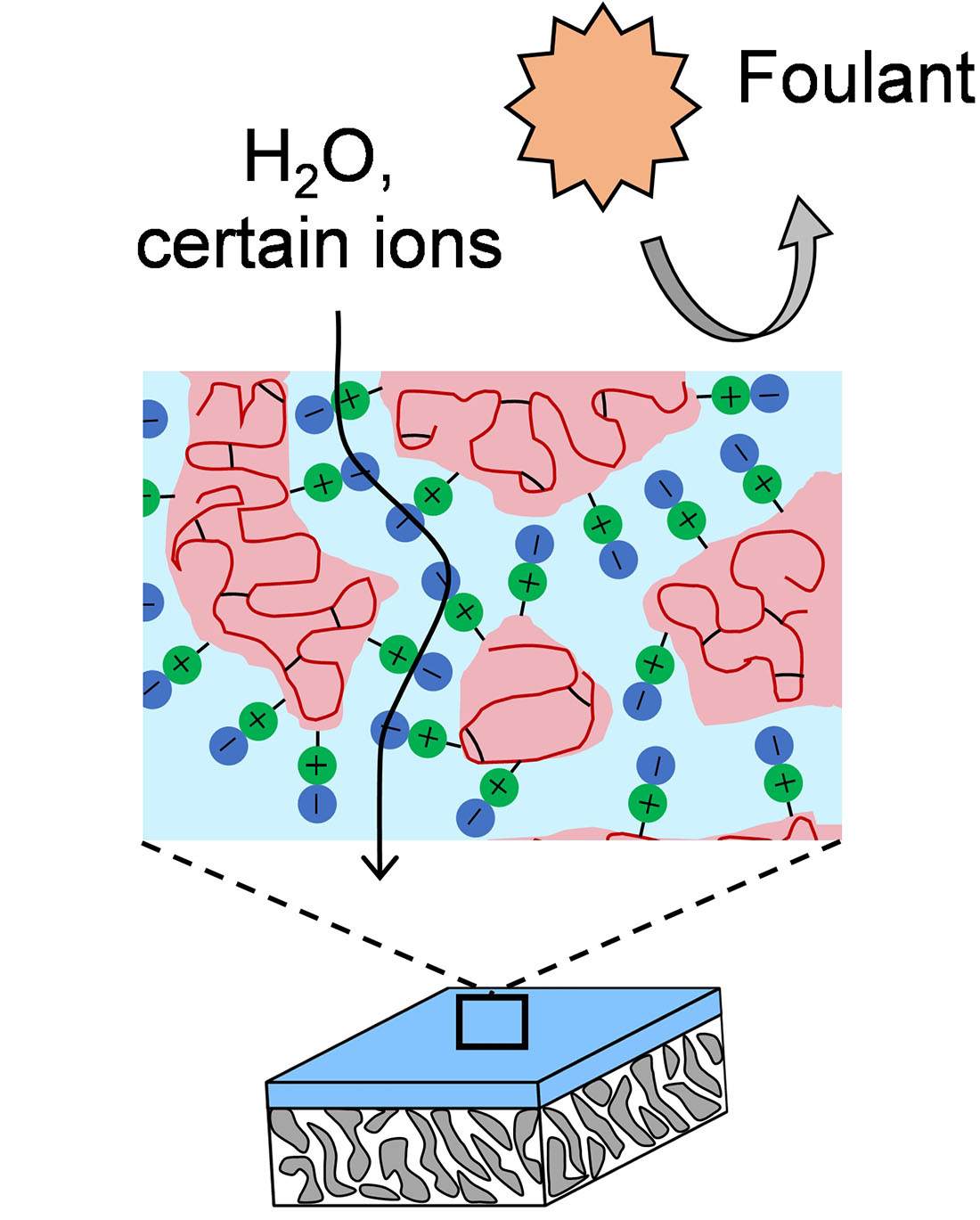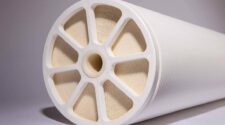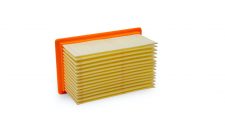
5th Year Ph.D. Student
Tufts University Department of Chemical and Biological Engineering Smart Polymers, Membranes and Separations Laboratory
Professor/Advisor:
Ayse Asatekin, Ph.D.
Samuel “Sam” Lounder is pursuing a Ph.D. degree in Chemical and Biological Engineering from Tufts University under the supervision of Professor Ayse Asatekin, Ph.D. Prior to joining Tufts, he received his bachelor’s degree in Chemical Engineering from the University of Maine.
Lounder’s research involves the design of nanoporous water filtration membranes for applications such as wastewater treatment, selective ion removal and desalination. His work leverages self-assembling copolymers that spontaneously form a network of water-permeable nanopores ~1.5nm in diameter. He develops new polymer chemistries and membrane post-modification techniques that allow precise control over nanopore diameter and other properties, ultimately controlling membrane separation performance. This allows the design of membranes with advanced ion selectivity and fouling resistance, addressing key limitations of current membrane filters.
Lounder will complete his Ph.D. in 2022. He holds two first-author papers (with four additional first-author papers either in review or in preparation), four co-author papers, and four provisional patents. He was awarded the 1st place prize in the materials session poster competition at the North American Membrane Society (NAMS) 2020 meeting and received the 2020-2021 Tufts Institute of the Environment (TIE) research fellowship.
Lounder utilizes zwitterionic amphiphilic copolymers (ZACs), defined as random copolymers of hydrophobic and zwitterionic monomer building blocks, to develop self-assembled water filtration membranes. Zwitterions are hydrophilic molecules that contain an equal number of covalently bound positive and negative charges. Due to the unique properties of zwitterions, ZACs can self-assemble to form a network of ~1.5 nm zwitterionic nanopores. Thin film composite (TFC) membranes are prepared by coating a thin (~ 1 µm) ZAC layer on top of a porous support, a simple and scalable manufacturing method.
The zwitterions not only drive ZAC self-assembly, but also prevent membrane fouling by providing a protective sheath of water molecules to the membrane surface. Fouling is a critical challenge that limits membrane use in important areas such as wastewater treatment, bioprocessing, desalination, and other ion separation challenges. The remarkable fouling resistance of ZAC membranes has led to their commercialization by ZwitterCo, a Tufts-based startup. To further increase the potential of ZAC membranes, however, Lounder believes it is essential to develop a method for controlling nanopore diameter to allow new separations.
The remarkable fouling resistance of ZAC membranes has led to their commercialization by ZwitterCo, a Tufts-based startup. To further increase the potential of ZAC membranes, however, Lounder believes it is essential to develop a method for controlling nanopore diameter to allow new separations.
Research overview
In work recently published in Chemistry of Materials, Lounder has developed membranes using cross-linkable ZACs (x-ZACs), a new polymer chemistry that allows for controllable reductions in nanopore diameter (Figure 1). This approach allows x-ZAC membrane separation performance to be tuned for custom applications, such as sulfate removal, water softening, or mono-/disaccharide separations, while maintaining the exceptional fouling resistance of previous ZAC membranes.
In a following study recently published in the Proceedings of the National Academy of Sciences, Lounder has demonstrated that x-ZAC membranes possessing exceptionally small nanopores- diameters less than 1.0 nm- are capable of advanced chloride/fluoride separation. This performance is due to different zwitterion-chloride and zwitterion-fluoride interaction strengths, which become greatly amplified in the x-ZAC system due to confinement in the sub-nanometer nanopores. As a result, the zwitterions of x-ZAC membranes provide the key advantages of both fouling resistance and ion selectivity over other membrane technologies. Many communities worldwide suffer from widespread skeletal and dental fluorosis due to dangerously high fluoride levels in available groundwater sources, suggesting that x-ZAC membranes could have a sustained impact through selective fluoride removal from drinking water. New x-ZAC chemistries can likely be developed to achieve interaction-based ion separations for many other applications, such as lithium recovery from brine deposits.
Career goals
Lounder expects that membrane-based technologies will play an important role in addressing environmental constraints and new engineering challenges. After graduating, he aims to develop advanced membranes for both current and emerging water purification challenges. His approach will be to combine new polymer chemistries with novel and scalable manufacturing methods to access advantageous performance features such as fouling resistance, selectivity, and chemical/temperature stability. He is open to either an academic or industrial research setting, so long as he can develop new and impactful membrane technologies.
For details on how to submit yourself or a student you know for consideration as a “Student Spotlight” in IFN, contact Matt Migliore at mmigliore@inda.media or +1 919.459.3754.











